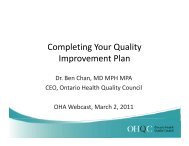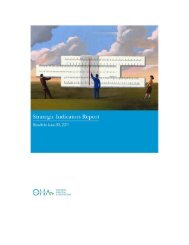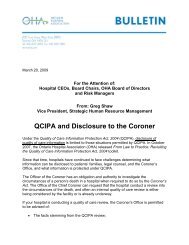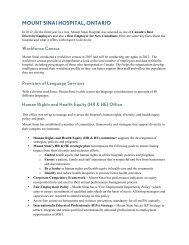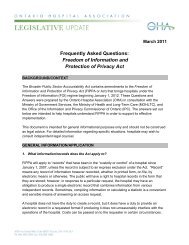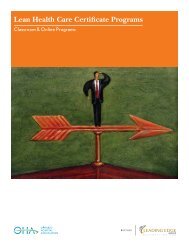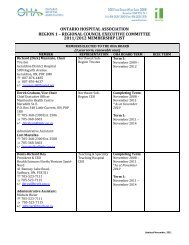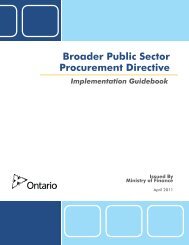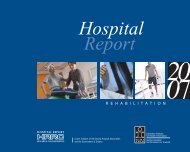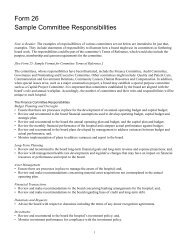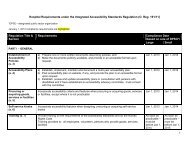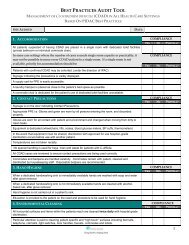Roles and Responsibilities of Physicians Supervising PAs - Ontario ...
Roles and Responsibilities of Physicians Supervising PAs - Ontario ...
Roles and Responsibilities of Physicians Supervising PAs - Ontario ...
- No tags were found...
Create successful ePaper yourself
Turn your PDF publications into a flip-book with our unique Google optimized e-Paper software.
are 4 <strong>and</strong> may choose to delegate the authority to perform these acts to a PA 5 . Inorder to do so, physicians must follow the process <strong>of</strong> delegation described in TheCollege <strong>of</strong> <strong>Physicians</strong> <strong>and</strong> Surgeons <strong>of</strong> <strong>Ontario</strong>’s Policy on Delegation <strong>of</strong>Controlled Acts 6 .CPSO’s Policy allows for controlled acts to be delegated in one <strong>of</strong> two ways:• Through a direct order. A direct order provides instructions from anindividual physician to the PA (<strong>and</strong>/or others), relating to a specific patient. Ittakes place after the physician <strong>and</strong> patient have established a relationship.The order indicates a specific procedure or treatment to be delivered at aspecific time for that patient. The direct order may be verbal (over thetelephone or in person) or written.• Through a medical directive. A medical directive is an advance instructionfrom a physician, or group <strong>of</strong> physicians, to the PA (<strong>and</strong>/or other providers). Itpertains to any patient who meets the criteria set out in the medical directive.The medical directive contains the delegation <strong>and</strong> provides the authority forthe PA to carry out the treatments, interventions or procedures that arespecified in the directive, providing that certain conditions <strong>and</strong> circumstancesexist. The directive can authorize the PA to act before the actual physicianpatientrelationship has been established. However, a relationship betweenthe patient <strong>and</strong> physician must be established before the end <strong>of</strong> thatencounter.2.0 Role <strong>and</strong> <strong>Responsibilities</strong> <strong>of</strong> the <strong>Supervising</strong> PhysicianA PA requires the direction <strong>and</strong> supervision <strong>of</strong> clinical work by a registeredphysician. Any physician who assigns <strong>and</strong> supervises the clinical work <strong>of</strong> a PAmust:• underst<strong>and</strong> the PA-physician relationship, <strong>and</strong>• be willing to work with the PA in a manner that supports the PA-physicianrelationship.In some practice settings, a PA may receive supervision from multiplephysicians. It may be that the best model for PA practice involves the PAworking with multiple physicians during one shift, multiple physicians on variousshifts, or multiple physicians over time. Some physicians may provide more456<strong>Physicians</strong> are authorized to perform 12 <strong>of</strong> the 13 controlled acts set out in the RegulatedHealth Pr<strong>of</strong>essions ActUnder appropriate circumstances, physicians may delegate the controlled acts which theyhave authority to perform to other individuals, who may or may not be members <strong>of</strong> aregulated health pr<strong>of</strong>essionThis policy is appended to this document.Updated July 2011 6



